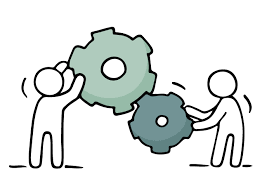15 Proven Strategies to Cultivate High-Performing Teams
Organizational success hinges on the ability to build and maintain high-performing teams. Synergistic teamwork, born from diverse skills and perspectives, unlocks extraordinary achievements. However, fostering this collaborative environment requires a proactive and strategic approach. This article outlines fifteen actionable strategies, complete with practical examples, to cultivate exceptional teamwork and collaboration within your organization.
1. Crystallize Roles and Responsibilities: Clarity is paramount. Define each team member's role and responsibilities explicitly, ensuring everyone understands their individual contribution to the team's overall objectives. For a marketing team, this might involve designating one member as the content creator and another as the social media manager, eliminating ambiguity and fostering accountability.
2. Prioritize Open Communication: Cultivate a culture where open dialogue thrives. Team members must feel empowered to freely express ideas and concerns. Regular team meetings, brainstorming sessions, and open forums are invaluable tools. A weekly check-in, for instance, allows for project updates and the gathering of diverse perspectives.
3. Nurture a Supportive Team Culture: A supportive environment is crucial. Team members should feel valued and encouraged to assist one another. Acknowledge and appreciate individual efforts, and celebrate collective successes. Team-building activities and milestone celebrations foster camaraderie and strengthen team bonds.
4. Establish Crystal-Clear Objectives: Set specific, measurable, achievable, relevant, and time-bound (SMART) goals. Ensuring everyone understands and is aligned with the team's purpose is critical for effective collaboration and shared vision. A software development team, for example, might aim to release a new product version within a defined timeframe.
5. Champion Knowledge Sharing: Foster a learning culture where knowledge is freely exchanged. Encourage team members to share their expertise and experiences, promoting collective growth. Workshops, knowledge-sharing sessions, and mentorship programs can facilitate this process.
6. Embrace Diversity and Inclusion: Diverse perspectives are the lifeblood of innovation. Actively seek out and value individuals from various backgrounds, experiences, and skill sets. This inclusivity fuels creativity, problem-solving, and more informed decision-making.
7. Build Trust and Mutual Respect: Trust and respect form the bedrock of effective collaboration. Create a safe space where team members feel comfortable sharing their opinions without fear of judgment. This fosters increased cooperation and engagement.
8. Leverage Team-Based Projects: Assign projects that necessitate collaboration. These shared endeavors build relationships, enhance teamwork, and improve problem-solving capabilities. For example, a team might analyze customer feedback and propose actionable improvements.
9. Implement Regular Feedback Mechanisms: Regular, constructive feedback is instrumental in continuous improvement. Encourage both peer-to-peer and upward feedback to foster personal and team growth. Positive reinforcement strengthens collaborative efforts, while constructive criticism identifies areas for development.
10. Foster a Positive and Engaging Work Environment: A positive work environment is essential for productivity and collaboration. Ensure your team feels valued, motivated, and supported. This includes providing a comfortable workspace, promoting work-life balance, and facilitating regular team-building activities.
11. Utilize Collaborative Technologies: Leverage collaborative tools and platforms such as Slack, Microsoft Teams, Asana, or Google Workspace to streamline communication, information sharing, and project management, especially within geographically dispersed teams.
12. Encourage Cross-Functional Collaboration: Break down departmental silos. Promote collaboration across different teams and departments to broaden perspectives and facilitate the exchange of ideas. Joint workshops and meetings between marketing and sales teams, for instance, can improve strategic alignment.
13. Lead by Example: Leaders must embody the principles of effective teamwork and collaboration. Demonstrate open communication, active listening, and constructive feedback to inspire and motivate your team.
14. Invest in Team Bonding Activities: Strengthen team bonds through regular social events. Organize team outings, virtual social gatherings, or team-building exercises to cultivate personal connections and enhance trust.
15. Embrace Flexibility and Adaptability: Accommodate diverse working styles and preferences. Encourage open discussions about flexible working arrangements to support work-life balance and optimize collaboration.
By implementing these strategies, you will cultivate a high-performing team characterized by increased productivity, innovation, and a positive, supportive work environment. Remember, effective teamwork extends beyond achieving goals; it's about creating a space where everyone feels valued, motivated, and empowered to contribute their best. Start implementing these strategies today and watch your team flourish!




